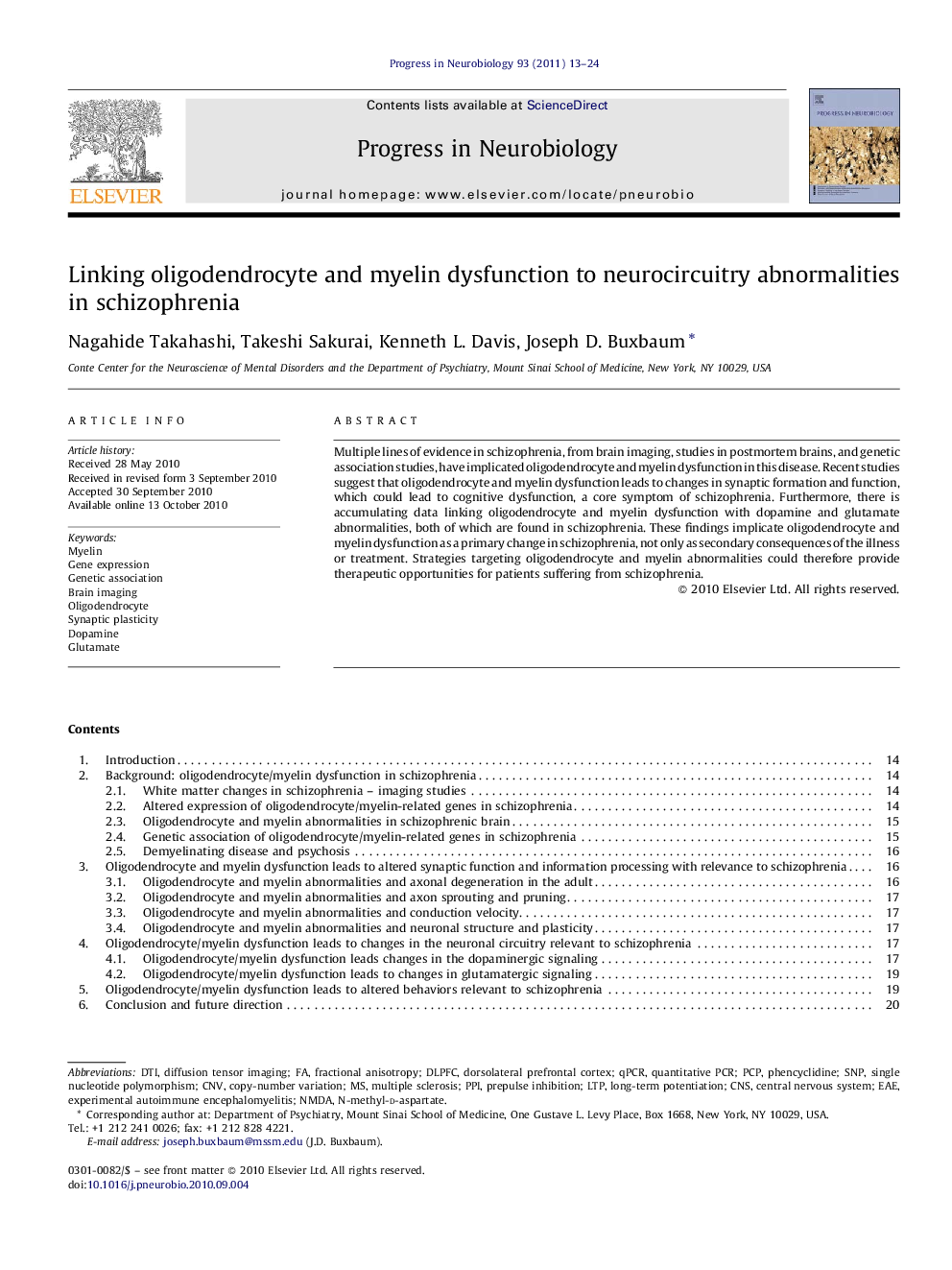| Article ID | Journal | Published Year | Pages | File Type |
|---|---|---|---|---|
| 4353469 | Progress in Neurobiology | 2011 | 12 Pages |
Multiple lines of evidence in schizophrenia, from brain imaging, studies in postmortem brains, and genetic association studies, have implicated oligodendrocyte and myelin dysfunction in this disease. Recent studies suggest that oligodendrocyte and myelin dysfunction leads to changes in synaptic formation and function, which could lead to cognitive dysfunction, a core symptom of schizophrenia. Furthermore, there is accumulating data linking oligodendrocyte and myelin dysfunction with dopamine and glutamate abnormalities, both of which are found in schizophrenia. These findings implicate oligodendrocyte and myelin dysfunction as a primary change in schizophrenia, not only as secondary consequences of the illness or treatment. Strategies targeting oligodendrocyte and myelin abnormalities could therefore provide therapeutic opportunities for patients suffering from schizophrenia.
Research highlights▶ There is abundant evidence implicating oligodendrocyte and myelin dysfunction in schizophrenia. ▶ These deficits can lead to changes in the disease-related neurocircuitry. ▶ Animal models for schizophrenia have been created by disrupting oligodendrocyte and myelin function. ▶ One potential direction would be to target oligodendrocyte and myelin abnormalities in schizophrenia.
